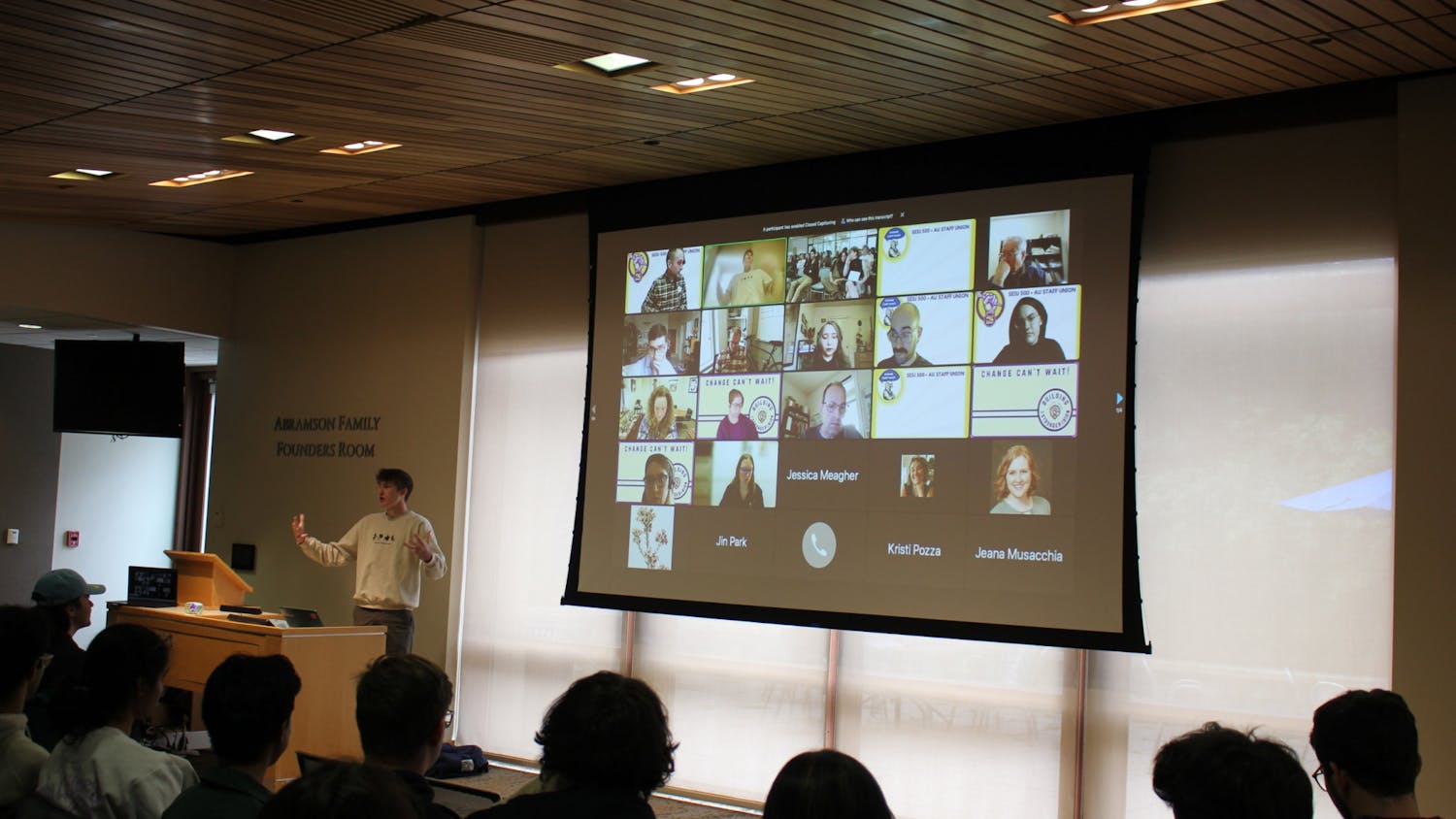If you’re doing the dirty this Valentine’s Day, make sure you’re clean and get tested for STIs. But be ready to shell out more than you did for that bouquet of roses.
The Student Health Center can no longer provide free on-site testing for chlamydia and gonorrhea due to D.C. Department of Health funding cuts.
The Health Center now provides these tests for a $30 fee. The screenings were previously free for students because the city government provided the kits to AU at no charge.
Student Health Center Director Dan Bruey said the Health Center is currently working on obtaining low cost or free testing, through either its lab or outside programs.
In response to student concerns over affordability, the Health Center created a discounted STI package that tests for herpes type 1, herpes type 2, syphilis and hepatitis C.
The package costs $80 and is not billed to insurance. If students would rather bill the testing to their insurance, the price is higher.
Bruey said that most students choose to pay the discounted fee rather than have it billed to insurance because some students are on their parents’ insurance plans and don’t want their parents to know they got tested.
Bruey said that students usually visit the Health Center for another reason, but start discussing STI screening and decide to get tested while they're there.
When students come into the Health Center for STI testing now, they are given the option to either pay the Health Center fee or go to a free testing site. The Health Center refers students to Planned Parenthood if they cannot afford the fees.
There are more than 40 locations in the District where students can get free testing, including at the Department of Health Sexually Transmitted Disease Clinic, at 1900 Massachusetts Ave., SE.
D.C. Public School students receive free testing
Although the city cut free testing from certain communities, including college health centers, it increased coverage for D.C. public high schools.
Now any public high school student can get free on-site testing and treatment for chlamydia and gonorrhea.
D.C.’s rate of chlamydia is three times the national average, according to the Department of Health.
Fifteen to 18-year-olds make up half of D.C.’s chlamydia and gonorrhea cases, according to Michael Kharfen, a Department of Health spokesman.
The Department of Health decided to cut free screening at college health centers and other communities after reviewing the statistics on chlamydia and gonorrhea infections in D.C.
“We were not finding very high infection rates among the college students, but we found very high rates among our adolescent students aged 15 to 19,” Kharfen said.
Because of the lower infection rate among college students and higher rate among high school students, the Department of Health needed to reallocate where their money was going.
“With the limited funding that we receive, we have to focus those efforts where we know there are lots of infections,” Kharfen said. “Offering free testing for people who don’t have the disease is not the same as offering free testing for adolescents who have no other resources and often cannot rely upon their parents, because they don’t want to talk to their parents about it.”
Testing at highest demand before, after vacations
Bruey said that the flow of students coming into the Health Center for STI screening jumps at certain points in the year, usually coinciding with a vacation.
Bruey said that traffic is highest after students return from spring break, and also jumps before they leave for winter break.
"Whether or not there is something really going on is something that we haven't measured," Bruey said.
Bruey also said one possible explanation for the winter increase is that students don't want to get tested at home, or want to get the test out of the way so they can enjoy their breaks.
But Bruey believes the reasons for a spring break spike are slightly different.
"[It] might just be because of the behavior that may happen on some spring break trips with too much alcohol or irresponsible decision making," Bruey added. "A lot of it may be because students are worried over one encounter, or it might be just for peace of mind, or it might be because they are actually experiencing symptoms.”
llandau@theeagleonline.com




